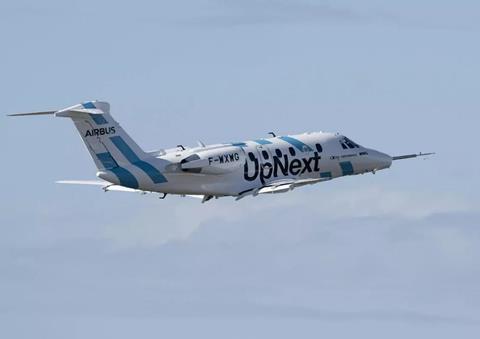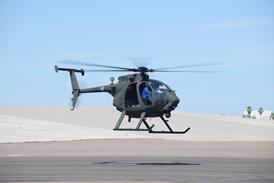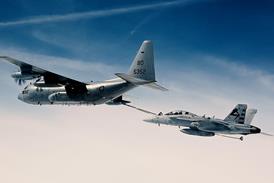Airbus innovation arm UpNext has conducted an initial test flight with a modified Cessna Citation VII which will ultimately serve as the platform for advanced wing technology.
UpNext is aiming to develop a biomimicry-based morphing wing to maximise aerodynamic efficiency and reduce fuel-burn.
Airbus says the Citation – with a 16m wingspan – will serve as a one-third scale demonstrator for the ‘eXtra Performance Wing’ which is intended to have a span of over 50m.
The aircraft lifted off from Toulouse on 6 November, to begin baseline data-gathering.
Airbus says this flight was an “important milestone”, adding that the demonstrator is fitted with the “exact systems” that it will have when the ‘eXtra Performance Wings’ are installed in 2024, for flight-testing starting in 2025.
“Data gleaned from this and subsequent flight tests will allow Airbus engineers to measure important baseline performance metrics that will be used to determine the impact of the new wing design,” the airframer states.

The wing project commenced in September 2021 with the aim of exploring technologies which could be incorporated into next-generation Airbus aircraft.
“We chose the Cessna specifically because it constituted the best trade-off between project complexity and representativeness of the final design,” says the project’s technical director, Sebastien Blanc.
Once the initial flight testing has accumulated sufficient baseline data, the demonstrator will be flown to Cazaux in France, where it will be stationed.
“A remote operation system will be integrated into the aircraft, followed by flights to test the communication between the 20 antennas on the aircraft and the control centre on the ground,” says Airbus.
Once installed on the Citation, the morphing wing is intended to adapt automatically and dynamically to flight conditions, much like a bird’s feathers.
“The design incorporates innovative active control technologies as well as physical changes to the wing structure,” says the airframer.
“Gust sensors on the front of the aircraft will register changes in turbulence, triggering relevant adjustments to the control surfaces of the wing.”
Airbus adds that hinged wing-tips will keep the aircraft within airport gate size restrictions while also serving to reduce pressure on the wing structure in flight.
The demonstrator will be remotely-piloted during the flight-testing phase, it says, enabling the project team to “push the technologies on board to their limits”.
“As the Cessna is only a demonstrator and will not be put into production, the decision to have a pilot test the aircraft from a ground centre instead of on-board also alleviates the need to certify the demonstrator for human flight,” Airbus adds.


























